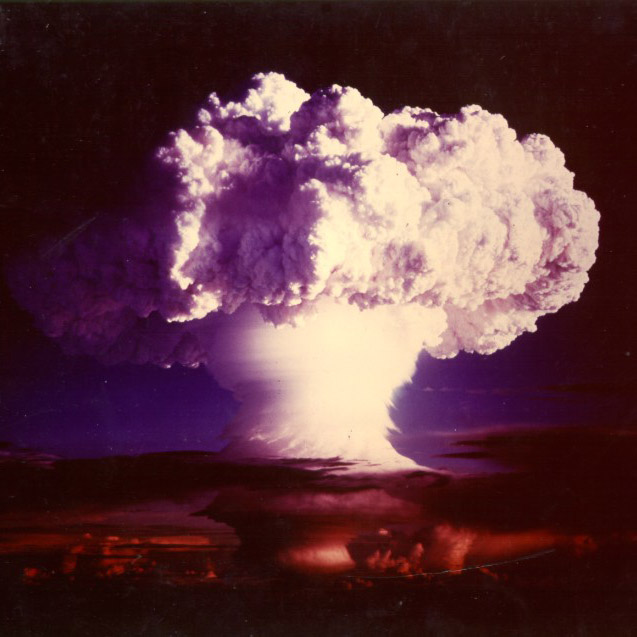Einsteini
99
Es
Nhóm
Không rõ
Chu kỳ
7
Phân lớp
f
Prô ton
Electron
Nơ tron
99
99
153
Tính Chất Chung
Số nguyên tử
99
Nguyên tử khối
[252]
Số khối
252
Danh mục
Nhóm Actini
Màu sắc
Không rõ
Có tính phóng xạ
Có
Được đặt tên theo Albert Einstein
Cấu trúc tinh thể
Không rõ
Lịch sử
Einsteinium được phát hiện như một thành phần của mảnh vỡ từ vụ nổ bom hydro đầu tiên vào năm 1952.
Nó được xác định bởi Albert Ghiorso và các cộng sự tại Đại học California, Berkeley phối hợp với các Phòng thí nghiệm Quốc gia Argonne và Los Alamos, trong bụi phóng xạ từ vụ thử hạt nhân Ivy Mike.
Nguyên tố mới này được tạo ra bởi vụ nổ hạt nhân với số lượng rất nhỏ bằng cách thêm 15 neutron vào uranium-238.
Nó được xác định bởi Albert Ghiorso và các cộng sự tại Đại học California, Berkeley phối hợp với các Phòng thí nghiệm Quốc gia Argonne và Los Alamos, trong bụi phóng xạ từ vụ thử hạt nhân Ivy Mike.
Nguyên tố mới này được tạo ra bởi vụ nổ hạt nhân với số lượng rất nhỏ bằng cách thêm 15 neutron vào uranium-238.
Số electron mỗi phân lớp
2, 8, 18, 32, 29, 8, 2
Cấu hình electron
[Rn] 5f11 7s2
Einsteini là kim loại hóa trị hai đầu tiên trong chuỗi actinit
Tính Chất Vật Lý
Trạng thái vật chất
Rắn
Mật độ
8,84 g/cm3
Nhiệt độ nóng chảy
1133,15 K | 860 °C | 1580 °F
Nhiệt độ sôi
-
Nhiệt lượng nóng chảy
Không rõ kJ/mol
Nhiệt bay hơi
Không rõ kJ/mol
Nhiệt dung
- J/g·K
Hàm lượng trong vỏ trái đất
Không rõ
Hàm lượng trong vũ trụ
Không rõ

Nguồn ảnh: Wikimedia Commons (National Nuclear Security Administration)
Einsteinium lần đầu tiên được phát hiện trong bụi phóng xạ từ thử nghiệm hạt nhân Ivy Mike
Số CAS
7429-92-7
Số CID của PubChem
Không rõ
Tính Chất Nguyên Tử
Bán kính nguyên tử
-
Bán kính cộng hoá trị
-
Độ âm điện
1,3 (Thang Pauling)
Năng lượng ion hóa
6,42 eV
Nguyên tử khối
28,5 cm3/mol
Độ dẫn nhiệt
0,1 W/cm·K
Trạng thái ôxy hóa
2, 3
Ứng dụng
Einsteinium chủ yếu được sử dụng cho mục đích nghiên cứu khoa học.
Đồng vị hiếm einsteinium-254 được ưa chuộng để sản xuất các nguyên tố siêu nặng.
Einsteinium-254 được sử dụng làm dấu hiệu hiệu chuẩn trong máy quang phổ phân tích hóa học của tàu thăm dò mặt trăng Surveyor 5.
Đồng vị hiếm einsteinium-254 được ưa chuộng để sản xuất các nguyên tố siêu nặng.
Einsteinium-254 được sử dụng làm dấu hiệu hiệu chuẩn trong máy quang phổ phân tích hóa học của tàu thăm dò mặt trăng Surveyor 5.
Einsteini có hại do tính phóng xạ của nó
Số đồng vị
Các đồng vị bền
-Các đồng vị không bền
240Es, 241Es, 242Es, 243Es, 244Es, 245Es, 246Es, 247Es, 248Es, 249Es, 250Es, 251Es, 252Es, 253Es, 254Es, 255Es, 256Es, 257Es, 258Es